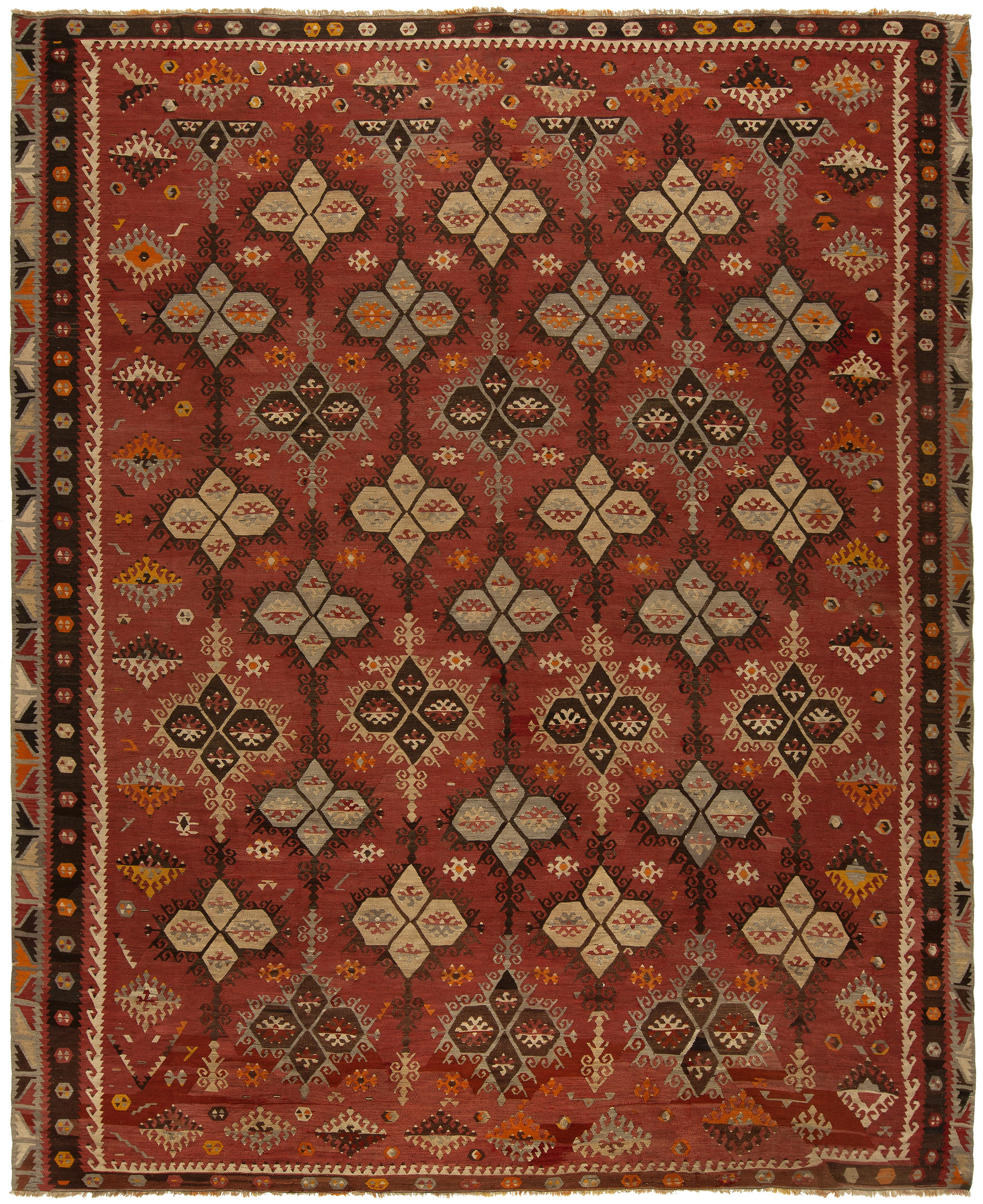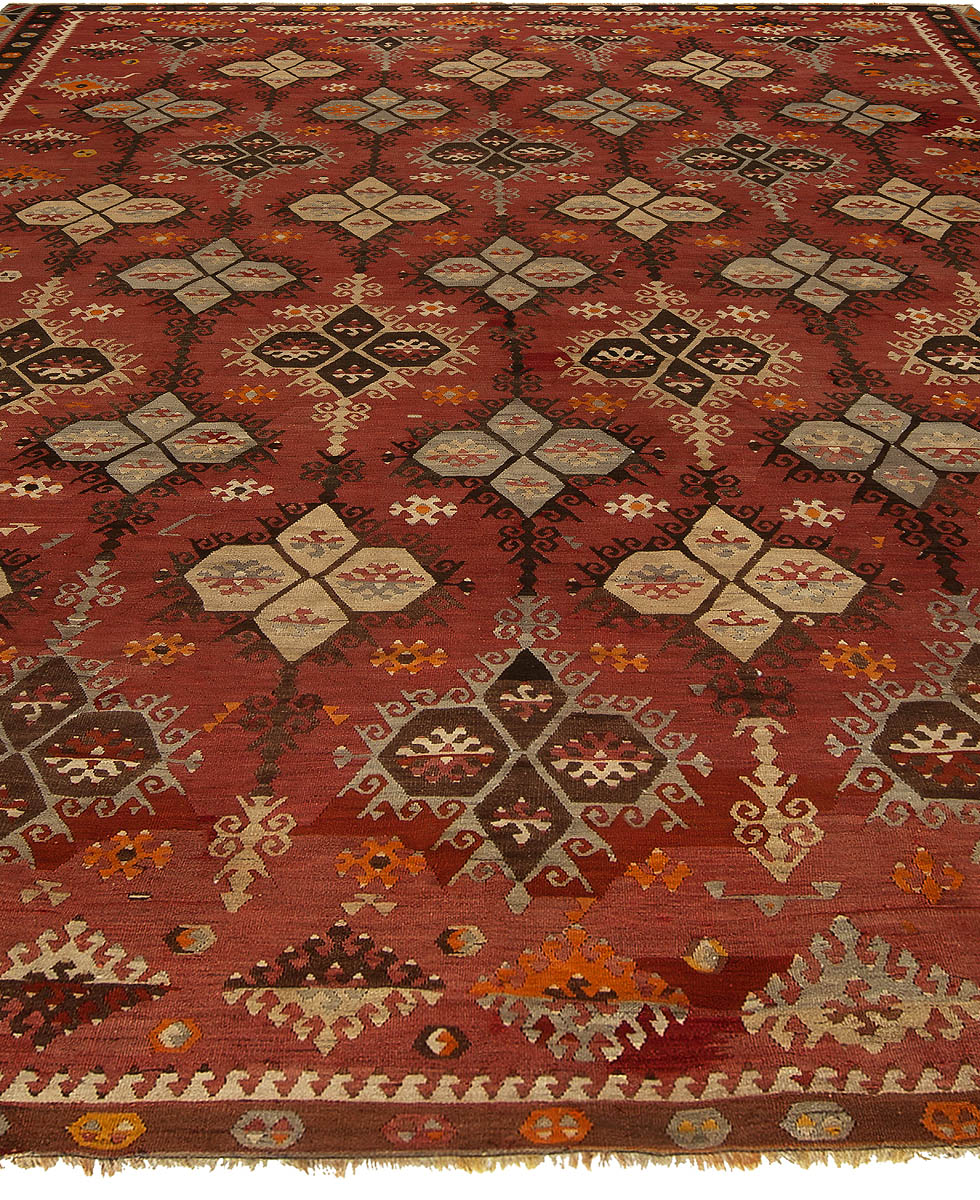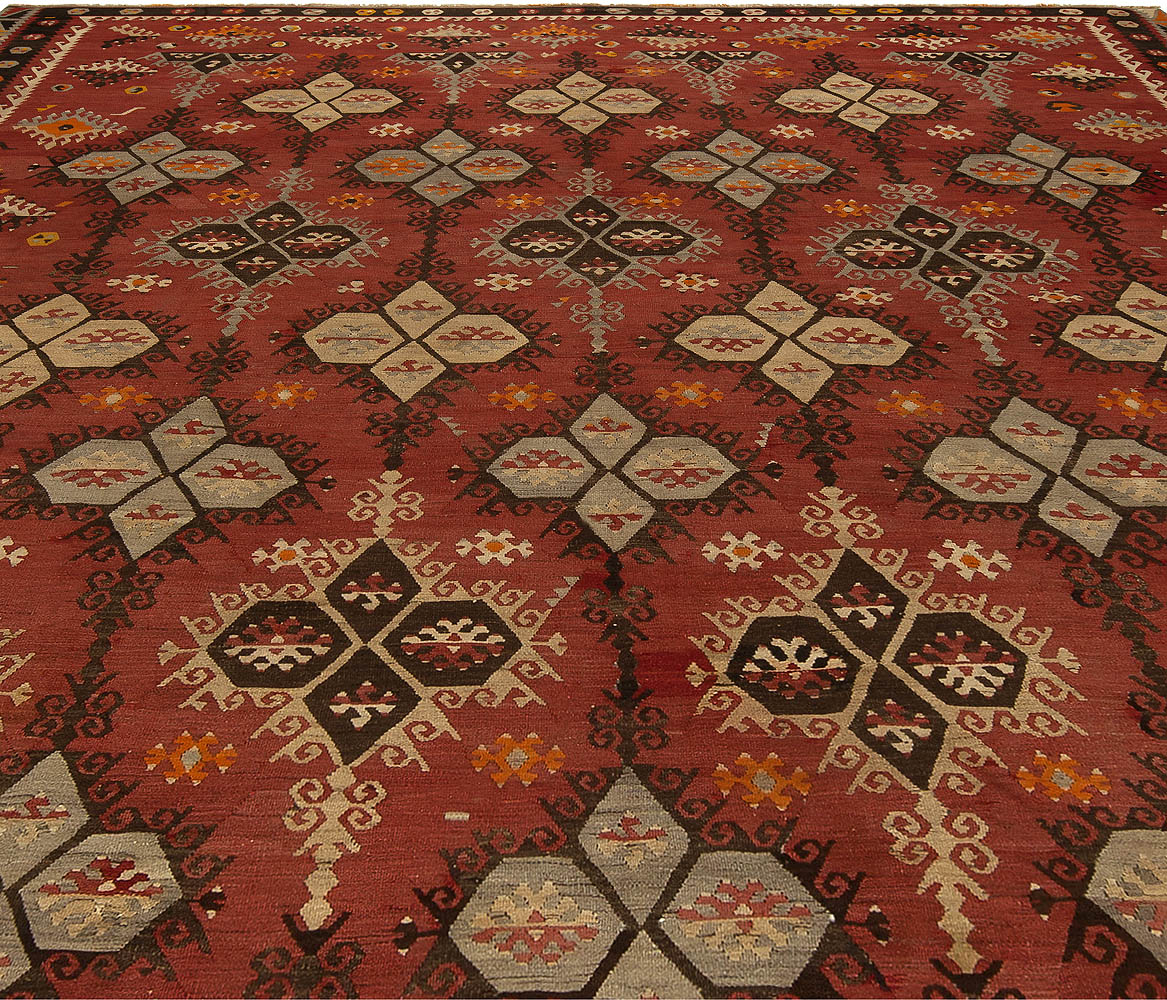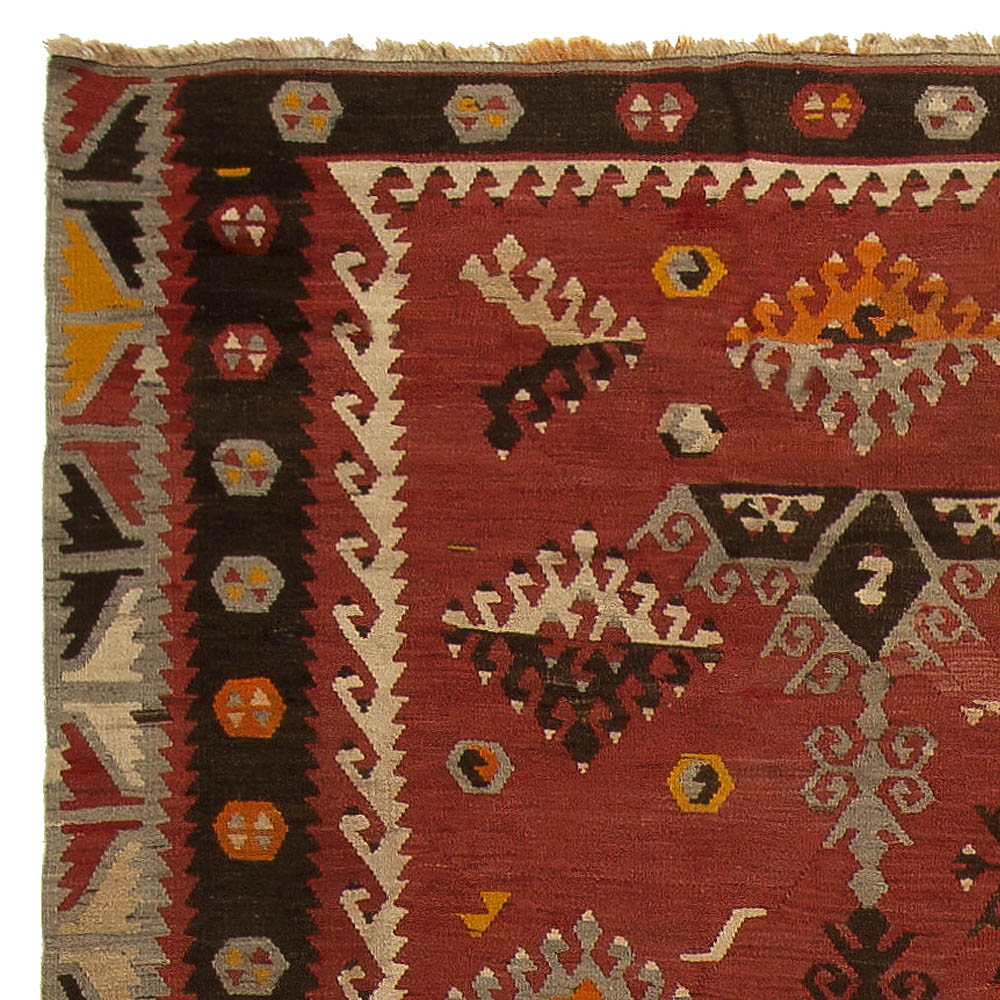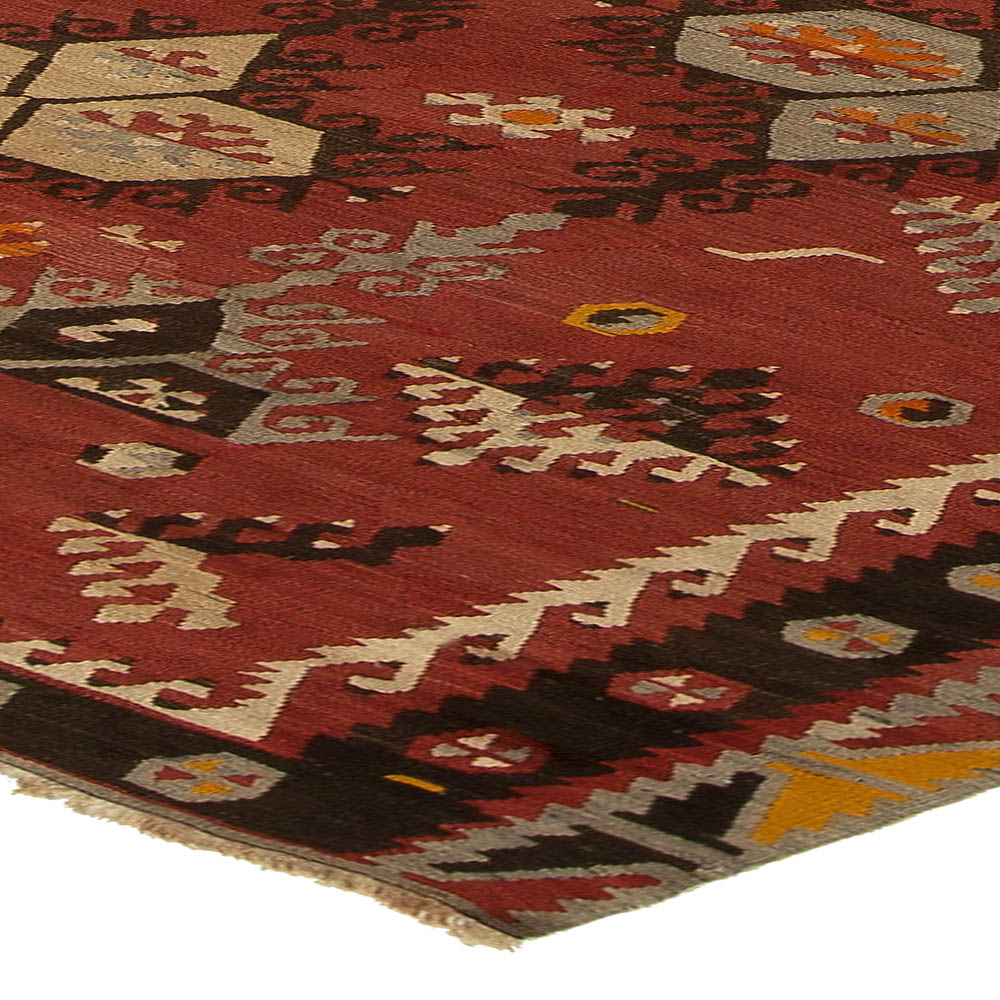Turkish Kilim Rug BB5429 10'2" × 12'6"
Often referred to as Anatolian, rugs have been woven in the area of present-day Turkey since the 13th century with the arrival of the Seljuks, who were nomadic tribes from Central Asia. Turkish rugs were first brought to Europe in the Middle Ages and were in such high demand that Europeans in the fifteenth and sixteenth centuries referred to all oriental rugs as “Turkey rug,.” In contrast to Persian rugs, Turkish rugs of the nineteenth century were less sophisticated,brighter in color, more rectilinear, and were more coarsely-woven. Repeating patterns are rare and prayer rugs with mihrabs in solid colors are common in antique Turkish rugs. Of the many weaving centers throughout Anatolia, each created an innately Turkish rug with a distinct signature style native to its specific region. Decorative antique carpets from Sivas are often finely-woven interpretations of the classical Persian medallion design and have floral infill. Hereke rugs often feature luxurious materials such as silk and metal-thread worked into designs emulating the antique Persian carpets of the Ottoman and Safavid Court workshops. Ghiordes, in the western part of Turkey, is known for precisely figured, colorful, multi-bordered antique prayer rugs with open prayer niches, and stylized architectural motifs. The antique Borlou carpet most closely resembles the dramatic scale, informality and pleasing palette of oriental Oushak rugs.
Out of stock
